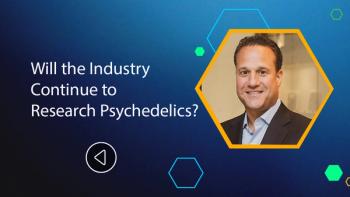GLP-1s aren't a good fit for every patient
Pharmaceutical Executive: How significant is the issue of patients either not seeing results with or struggling to stay on GLP-1s?
Andres Acosta, MD, PhD: It's a major concern. GLP-1 medications can be life-changing for some people, but they're not a fit for everyone. Some patients don't lose as much weight as they’d hoped, and others have trouble staying on the medication because of side effects like nausea or headaches. In fact, up to 40 percent report nausea, and more than 6 percent stop treatment because they can’t tolerate it. This makes it harder to treat obesity effectively across the board. It's important for patients to know that these medications don’t work the same for everyone. Obesity is a complex condition, and treatment needs to be personalized. That’s why it helps to work with a provider who specializes in weight management, someone who can help find the right medication and support patients through the process, especially when side effects show up.
Key Takeaways
- Some patients don't lose as much weight as they’d hoped, and others have trouble staying on the medication because of side effects like nausea or headaches.
- The ability to predict side effects such as nausea before starting treatment represents a paradigm shift in precision medicine.
- One of the key insights driving the future of obesity care is that not all patients respond to the same therapy.
PE: What are the ways that HCPs can predict which patients will suffer serious side effects from GLP-1s?
Acosta: The ability to predict side effects such as nausea before starting treatment represents a paradigm shift in precision medicine. Our research harnesses machine learning from Phenomix Sciences to develop a Genetic Risk Score (GRS) that allows healthcare providers to identify patients at elevated risk for side effects on GLP-1s. By analyzing individual genetic profiles, we can now predict which patients are more likely to experience adverse effects, thus enabling healthcare professionals to make proactive, evidence-based decisions that optimize both patient tolerability and long-term adherence.
PE: What are alternative treatment options for people who aren’t a good fit for GLP-1s?
Acosta: One of the key insights driving the future of obesity care is that not all patients respond to the same therapy, and that’s where phenotype-based treatment selection becomes critical. At Phenomix, we categorize obesity into four primary phenotypes based on the underlying biology driving a patient’s weight gain: Hungry Brain, Hungry Gut, Emotional Hunger, and Slow Burn.
Emotional Hunger patients often struggle with hedonic eating and poor appetite regulation tied to the brain’s reward system. These individuals tend to respond particularly well to therapies like Contrave (naltrexone/bupropion), which targets the central nervous system and helps curb cravings and emotional eating triggers.
Hungry Gut patients experience impaired satiety, meaning they don’t feel full easily. GLP-1 therapies are typically well-suited here, but for patients who can’t tolerate them, we may explore other medications that slow gastric emptying or consider behavioral satiety-enhancing strategies.
Hungry Brain patients have abnormal appetite signaling and overactive hunger pathways in the hypothalamus. These individuals may benefit from centrally acting agents or combination therapies that modulate hunger signals at the brain level.
Slow Burn is characterized by a low resting energy expenditure. Patients with this phenotype may respond best to therapies that help boost metabolic rate, whether through tailored pharmacological agents, activity-based interventions, or novel metabolic enhancers.
By aligning treatment with phenotype, HCPs can move beyond the trial-and-error approach that dominates obesity care today. For patients who are poor candidates for GLP-1s, understanding their phenotype opens up more precise and sustainable treatment pathways, improving outcomes, adherence, and long-term success.
PE: Are there other medications that this predictive system can be used for?
Acosta: The power of this predictive framework extends far beyond GLP-1s. The same machine learning and genomic tools used to predict side effects or response to liraglutide can be applied across a wide range of anti-obesity medications. This includes combination therapies like Qsymia and Contrave, which are particularly effective for specific obesity phenotypes. For example, Qsymia, may be a strong option for Hungry Brain patients with abnormal appetite signaling and difficulty controlling food intake due to dysregulated brain pathways. Contrave is highly effective for Emotional Hunger phenotypes, where hedonic and emotional triggers play a dominant role. By identifying the phenotype and integrating predictive analytics, we can determine not only who will respond to a given medication but also who is likely to experience adverse events.
This is where precision obesity medicine becomes a powerful tool not just for clinical decision-making, but for accelerating drug development. As pharmaceutical pipelines evolve, these predictive systems can optimize patient selection, improve adherence, and reduce trial failure rates by ensuring the right patient is matched to the right treatment from the outset.
We’re looking at other ways to predict the best suited patient for bariatric or endoscopic devices and predictors for comorbidities like diabetes or heart disease. The potential is endless in this area of medicine, and we’re excited to be leading the way.




